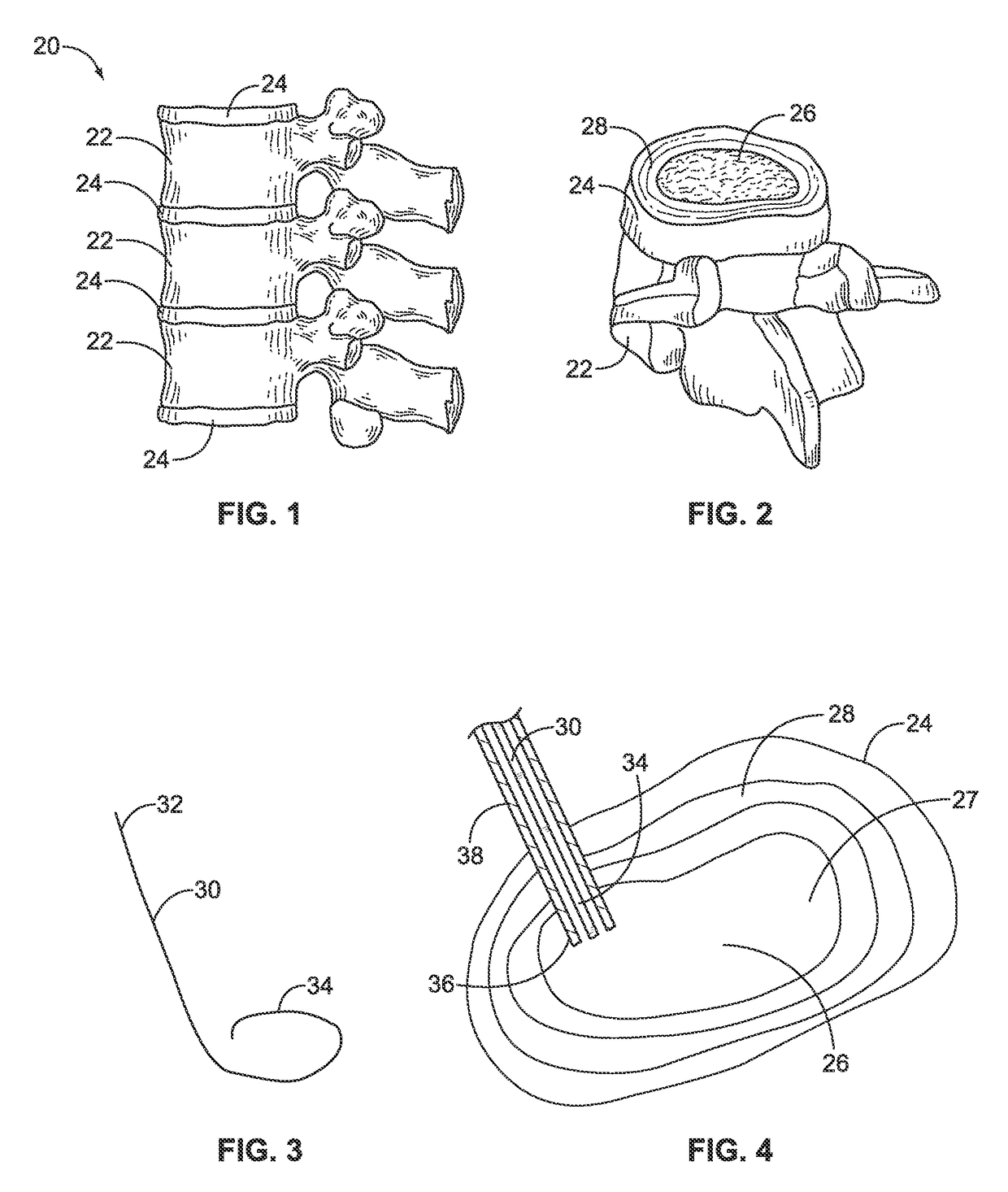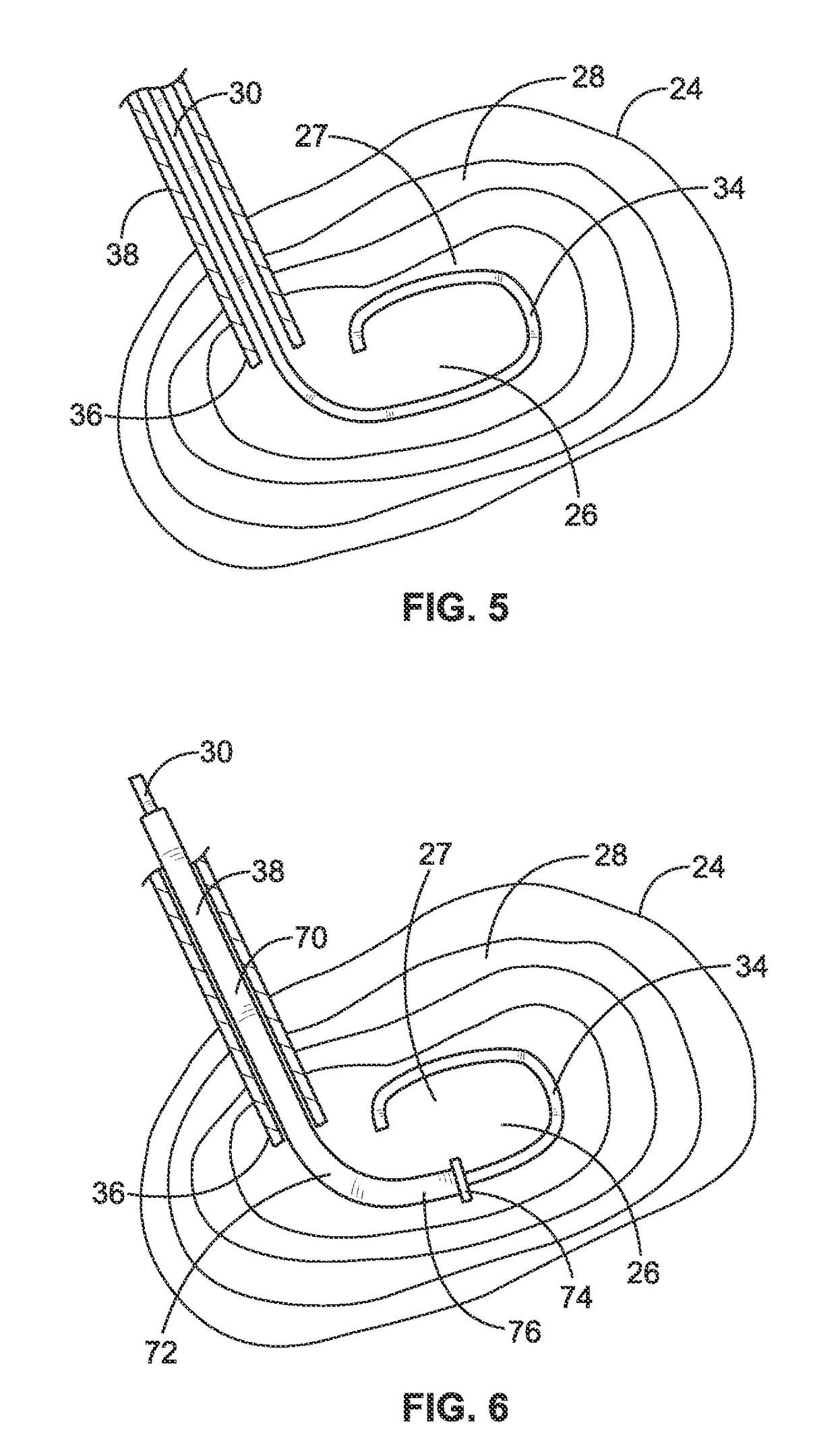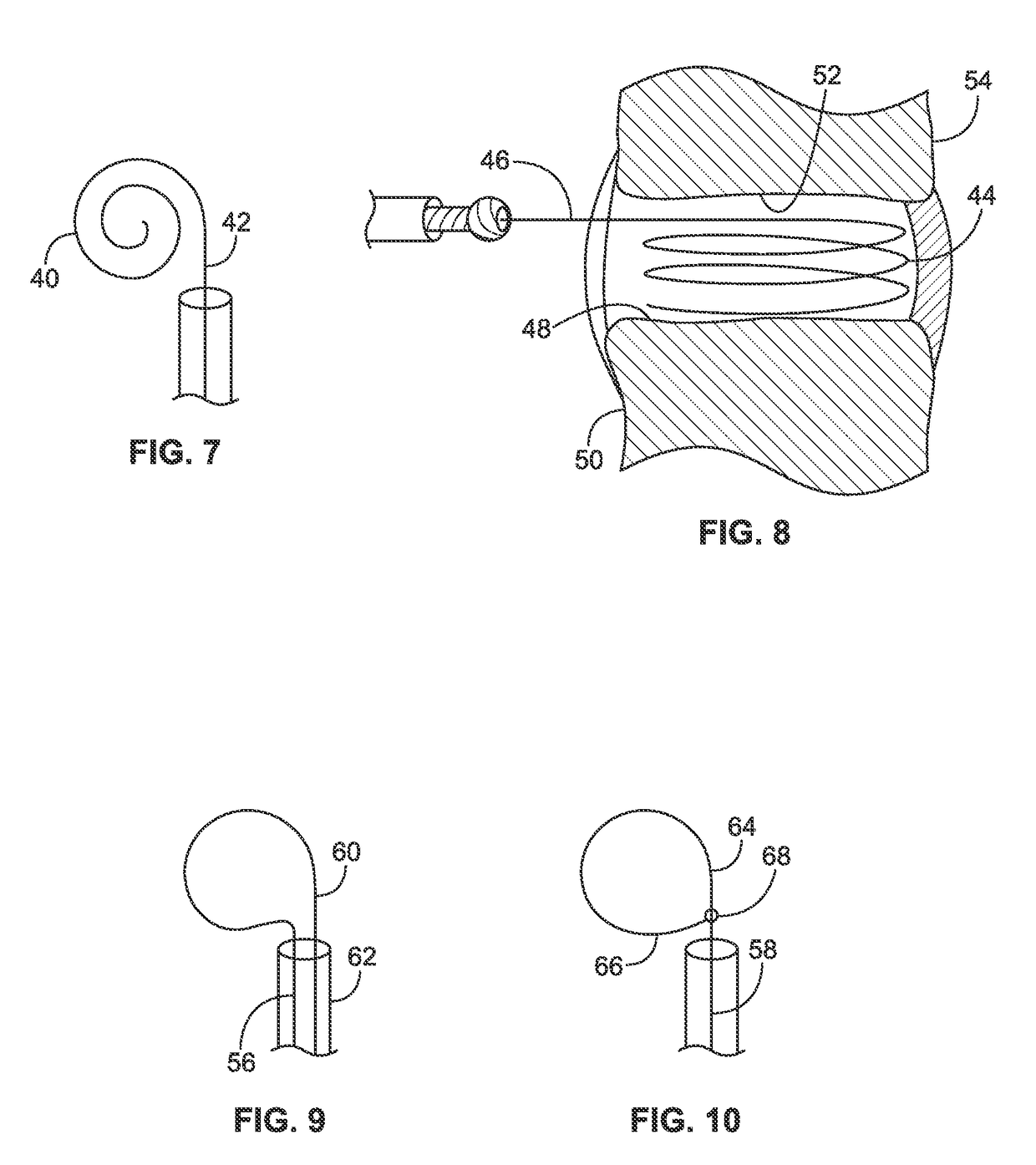Tissue removal tools and methods of use
a technology of tissue removal and tools, applied in the field of tissue removal tools and methods of use, can solve the problems of reducing the hydraulic pressure affecting the function of the internal disc,
- Summary
- Abstract
- Description
- Claims
- Application Information
AI Technical Summary
Problems solved by technology
Method used
Image
Examples
Embodiment Construction
[0073]FIG. 1 illustrates a section of a healthy vertebral (spinal) column, generally designated as 20. Vertebral column 20 includes vertebrae 22 and intervertebral discs 24 separating adjacent vertebrae. Intervertebral discs 24 connect the adjacent vertebra 22 together, providing a joint between the vertebrae that allows movement and flexing of the vertebral column 20. Intervertebral discs 24 also provide a cushion between the adjacent vertebrae 22.
[0074]FIG. 2 illustrates a perspective view of one of the intervertebral discs 24 and an associated inferior vertebra 22. The intervertebral disc 24 includes a nucleus pulposus 26 surrounded by an annulus fibrosus 28. The nucleus pulposus 26 is a gelatinous-like material that provides cushioning between adjacent vertebrae. The annulus fibrosus 28 is made up of tougher fibrous material that contains the nucleus pulposus 26 in the nuclear space.
[0075]Turning now to the tissue manipulation members or tools, such as the tissue disruption and ...
PUM
 Login to View More
Login to View More Abstract
Description
Claims
Application Information
 Login to View More
Login to View More - R&D
- Intellectual Property
- Life Sciences
- Materials
- Tech Scout
- Unparalleled Data Quality
- Higher Quality Content
- 60% Fewer Hallucinations
Browse by: Latest US Patents, China's latest patents, Technical Efficacy Thesaurus, Application Domain, Technology Topic, Popular Technical Reports.
© 2025 PatSnap. All rights reserved.Legal|Privacy policy|Modern Slavery Act Transparency Statement|Sitemap|About US| Contact US: help@patsnap.com



